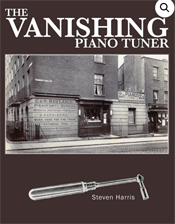Did You Know Piano Facts
Polyester and Pianos.
Polyester began as a group of polymers in W.H. Carothers' laboratory. Carothers was working for DuPont at the time when he discovered that alcohols and carboxyl acids could be successfully combined to form fibres.
Polyester as a polish is a three-component paint that utilizes the resin, catalyst and accelerant. Thanks to its tight molecular structure, polyester has a solid content which gives the product superior mechanical and chemical resistance to scratches
The application of Polyester finishes requires specialized equipment and machinery to produce a quality product. Polyester is specified when high scratch resistance and 100% sheen are needed.
Cleaning Polyester on Pianos
For everyday cleaning, wipe your piano with a clean, damp (not wet) cloth, followed by a clean dry cloth. If more stubborn soils do get on the finish, you may try dipping your cloth in a mild soap and water solution before wiping, and then follow that with a cloth dampened in clear water, and then the dry cloth.



